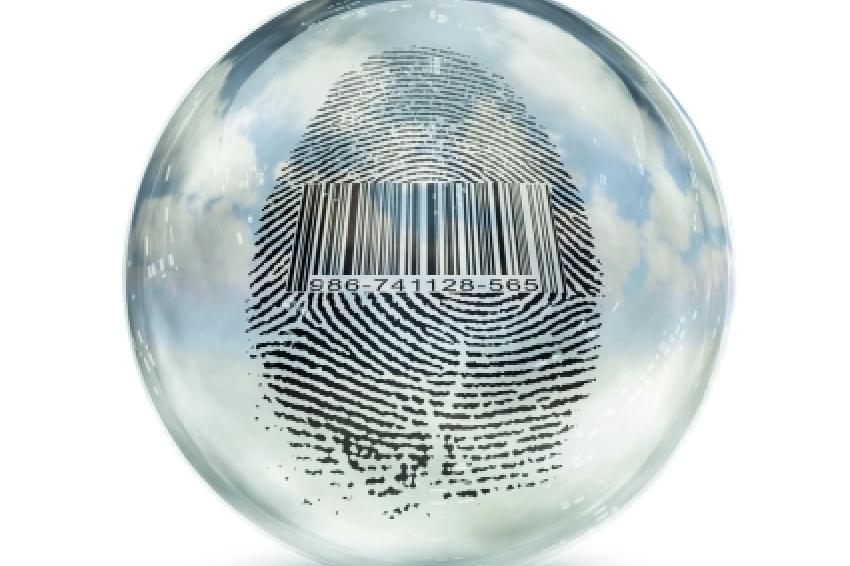Preventing Counterfeit Medicines Using Track and Trace Methods
United Effort for Standardized Identification Solution Necessary
Safety Net - With the increasing threat of counterfeit medicines entering the legitimate supply chain, there is a need to introduce a standardized identification system to accurately establish the identity of each individual pharmaceutical product. In order to tackle the escalating issue of counterfeit and falsified medicines, a unified approach is required.
Recent regulatory requirements introduced in the European Union have stipulated increasingly stringent measures for pharmaceutical companies to implement track and trace technology. This technology is a serialisation method that can improve traceability and transparency within the supply chain, providing increased confidence that only legitimate products are being taken to market. The pharmaceutical industry has a significant role to play in implementing the right technology into their processes, so that medicines can be accurately identified and tracked throughout the supply chain.
A United Front
Dispensing and dosing errors, reimbursement issues and cases of counterfeits in the legitimate pharmaceutical supply chain have highlighted the need to establish more clearly and effectively the identity of each individual medicine pack. The European supply chain is becoming increasingly complex, with billions of pharmaceutical products being transported and sold across the EU each year in an increasingly fragmented supply chain. This has resulted in a lack of transparency and increased difficulties in providing a full genealogy of medicines in the market place.
To tackle this issue effectively, there needs to be a united effort from the pharmaceutical industry, regulatory bodies, wholesalers and retailers to establish a standardized identification solution. A database where uniquely identifying bar codes on drug packaging can be verified at point of dispensing would significantly improve the ability to track pharmaceutical products on a global basis; there is an urgent need to improve traceability within the supply chain. Serialization technology provides the ideal solution to enhancing efficiency in the supply chain, reducing theft, counterfeit products and allowing manufacturers, distributors, retailers, pharmacies and end-users to ensure compliance with industry regulations.
Drive to Establish Regulatory Compliance
In order to sufficiently protect public health interests and the relationship of trust between patients and pharmaceutical suppliers, the entire production and supply chain needs to be closely regulated. The pharmaceutical industry operates on a global scale, and regulatory compliance across multiple geographies is fundamental to ensuring that the supply chain remains safe and secure.
The lack of a standardized system or recognized industry standard for the identification and coding of pharmaceutical products within Europe has resulted in many EU countries proposing and developing their own individual coding systems. These systems all differ in terms of the content of each code, through to its physical placement. The lack of a coherent approach to verifying scanned bar codes on drug packaging has undoubtedly contributed to the growing problem of pharmaceutical counterfeiting.
To combat these issues, the EU is pursuing the implementation of a standardized coding system that will include unique identifiers on each individual pack of medicines throughout EU member states. Following the successful trial of a point of dispensing verification system in Sweden in 2009 and 2010, the Falsified Medicines Directive (FMD) was published in July 2011, requiring the introduction of serialization and anti-counterfeiting measures throughout the pharmaceutical supply chain. EU member states were required to adopt the measures by January 2013, and pharmaceutical companies must be fully compliant with the requirements by 2017 in order to be eligible to trade within the EU.
In 2011, the European Federation of Pharmaceutical Industries and Associations (EFPIA) created the European Stakeholder Model (ESM), with the aim of establishing a system for verifying pharmaceutical products in compliance with the FMD. Key stakeholders in the pharmaceutical industry, including manufacturers, distributors, wholesalers and pharmacists are now working in partnership under ESM to implement a standardized identification solution for pharmaceutical products across Europe.
The solution developed by ESM partners is the European Medicines Verification System (EMVS), a cost-effective dispense coding and serialization system which uses 2D barcoding to verify the authenticity of medicinal products. The codes are generated and applied by manufacturers using a 2D data matrix barcode containing a unique serial number. Pharmacists can then check the identification code on each pack at point of dispense. This solution meets the requirements for pack identification under the FMD and will go a long way to combat the entry of falsified medicines in the EU supply chain ensuring patient safety across Europe.
Challenges Facing the Pharmaceutical Industry
The regulatory changes taking place will have a significant impact at the manufacturing and quality control level, and businesses will need to ensure they are compliant with standards throughout all their processes.
Counterfeit drugs are estimated to cost 7-10% of global pharmaceutical market revenue; there is a strong desire within the industry to implement track and trace technology to help overcome this issue. As well as being potentially life threatening to the patient, counterfeit medicines can damage a business' reputation, and many pharmaceutical companies cannot match the low cost competition, resulting in a loss of revenue, which would otherwise provide funding for further research and development. In addition, pharmaceutical companies must now also find cost effective ways of complying with legislative requirements.
As is often the case with the implementation of many new technologies and techniques, there are concerns over the associated capital expenditure and installation of additional equipment throughout the supply chain and in particular, at the point of dispensation. In order for the system to be successful, it will be essential to establish who will be responsible for covering the cost of the new barcode readers for the end-supplier. If smaller independent retailers are unable to afford to put the necessary measures in place, the system will not be effective. There are also concerns over the potential disruption to existing production processes, as any time delays in production can result in pharmaceutical companies incurring significant costs.
The Track and Trace Solution
With industry guidelines stipulating the need for more stringent measures to combat falsified and counterfeit drugs, pharmaceutical companies are increasingly introducing track and trace technology into their production processes.
Track and trace is a serialization method that can help to protect against counterfeiting and the falsification of medicines by authenticating, monitoring and controlling the flow of medicines throughout the supply chain. Serial numbers can be traced at various points throughout the supply chain which makes it easier to identify where counterfeit products have entered the chain and also allows for full traceability.
Ultimately, the primary aim of the technology is to protect the pharmaceutical supply chain and guarantee patient safety. However, there are a considerable number of business and economic benefits that can be gained from the practice helping to overcome a number of challenges faced by pharmaceutical companies. Due to the risk counterfeit pharmaceutical products pose to patients, they can tarnish the reputation of a brand, leading to reduced revenue and market share. Serialization techniques make it easier to identify counterfeits and help protect genuine pharmaceutical brands. In line with this, secure and traceable products are much more appealing to customers which can help to create a competitive advantage.
Delivering a Secure Supply Chain
In response to the challenges facing the pharmaceutical industry, companies such as Packaging Coordinators Inc. (PCI) are working to provide secure packaging solutions to support their customers in fully complying with new international standards to secure the supply chain against counterfeiters.
A key priority for pharmaceutical companies is having absolute confidence that only safe products that are compliant with domestic and international packaging requirements are taken to market. Sophisticated security systems can be put in place to monitor product flow throughout the packaging process, from the receipt of incoming bulk product to storage, transfer, processing, and final shipment.
The PCI serialization system is an end-to-end, point-of-dispense identification solution which uses a unique identification code on each pack, generated and applied by the packer. The system uses data structures defined by GS1 in their Global Traceability Standard for Healthcare document to create a "license plate" or serial on each pack. This number, when combined with the Global Trade Item Number (GTIN) creates a globally unique number. Each license plate also contains a 2D data matrix code together with the human readable data contained within, for example; serial number, GTIN, lot number and expiry date. Each pack can then be associated with its bundle and further with the shipping container and finally with the pallet with all of this aggregation information being stored and moved around the supply chain.
The product verification process then compares the data held within the data matrix code, with a secure product record on a database shared between the supplier and the customer. This provides confirmation that the product record exists and matches the data held on the product itself, as well as checking that it has not been previously marked as "dispensed" or that it does not contain any warning or advisory notes. This verification process would immediately alert the pharmacist if a packet containing the same number had been released into the supply chain.
Track and trace solutions need to accommodate different manufacturing sites and technologies, regulatory regimes and product requirements. Flexible and customizable track and trace solutions can be provided to meet a client's specific needs and can be easily integrated to ensure minimum disruption to existing manufacturing lines.
PCI has chosen the track and race solution from Antares Vision to manage the delivery of serialization at both line and site levels on a global basis. This system merges information received from PCI's customers with data held within its own ERP system to deliver the serialization to the customer's product. Serial activation and aggregation data can then be sent securely in B2B transactions to enable a customer's system to prepare for the receipt of serialized product and then perform its onward distribution.
Conclusion
The threat of counterfeit and falsified medicines is a global issue and therefore requires a united global approach to tackle it effectively. The serialization of pharmaceutical products and the ability to effectively track them is essential to the creation of a truly safe and secure supply chain. The formation of a unified, single-source, pan-European or even global database where scanned bar codes can be verified at the point of dispense is the crucial next step in the creation of true serialization and supply chain security.
The introduction of regulations requiring the implementation of a standardized track and trace system, combined with the commitment of pharmaceutical companies throughout Europe, as well as globally to the use of this technology will go a long way in creating a safe, secure and trustworthy supply chain. That is not to say that achieving a harmonized identification solution on a global scale will not represent a significant challenge, but once it has been effectively established, the benefits will be hugely significant. It is imperative that the pharmaceutical companies act now to overcome one of the most significant challenges facing the industry.
Contact
Packaging Coordinators, Inc.






